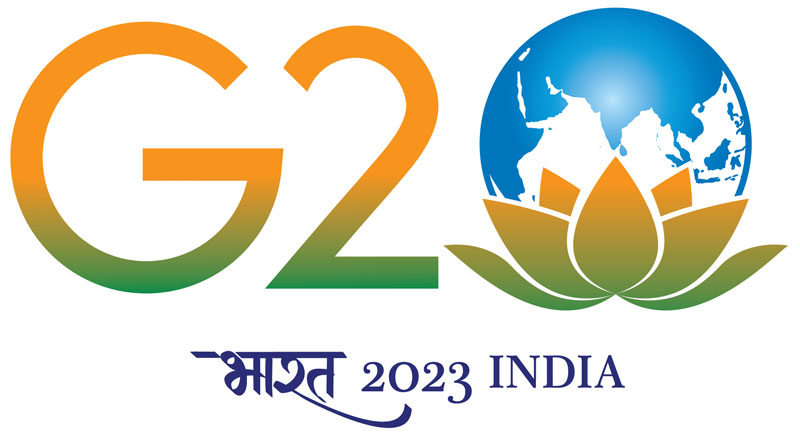Strengthening Civil Society Action for Transforming Lives of the Particularly Vulnerable Tribal Groups (PVTGs) of Jharkhand and Madhya Pradesh
BRLF implemented the European Union funded project “Strengthening Civil Society Action for Transforming Lives of the Particularly Vulnerable Tribal Groups (PVTGs) of Jharkhand and Madhya Pradesh”. The project aimed at transforming the lives and livelihoods of the PVTGs and Dalits of Madhya Pradesh and Jharkhand by:
Enhancing the quality of outcomes of the grassroots CSO intervention in the areas of water and clean energy in the wake of increasing climate change.
Building the capacities of CSOs in resource mobilisation, advocacy and policy dialogue.
Driving innovations in program content and strategy for improved climate resilience in the Water and Clean Energy Sector.
The main objective of the program is to increase the reach of government welfare schemes and to address challenges in sectors such as education, health, nutrition and innovation in tribal areas, in order to ensure an integrated and focused approach to the socio-economic development of the Scheduled Tribes population in a coordinated and planned manner. Keeping in mind our core competence in the field of CSO facilitation and screening, MoTA has appointed BRLF to carry out a rigorous screening process for shortlisting proposals from different parts of the country on various themes such as education, health and innovation.
Coverage (Blocks and Districts)
The project was implemented in about 279 villages of 4 blocks in 3 districts of Madhya Pradesh and two blocks of 2 districts in Jharkhand.
This is a working paper on the status of agriculture in Bodoland. The Bodoland Territorial Region is an autonomous region in Assam. A high agricultural productivity characterises Bodoland for many crops. Accordingly, the authors analyse agricultural productivity by looking at the latest data on inputs (e.g. land, water, fertiliser, pest control, agricultural machinery, finance and labour) and outputs (types of crops, coverage and output). The role of agriculture is important for the community and is fully connected with its culture and economy. The paper also provides a series of recommendations for improving the agriculture in the region.
- Bodoland is one of the areas in Assam with high agricultural productivity for many crops. But most of the area under crops (around 60 percent) is used for rice production. So, there is potential for increasing their production by increasing the area under other crops. Additionally, we can say that, by increasing the area under some other crops which enjoy good productivity and simultaneously increasing the productivity of some other crops, farmers in Bodoland can aspire to increase their income.
- Bodoland’s agriculture is mostly rainfall-dependent. 29 percent of Bodoland’s GCA is irrigated. Although that is higher than the state average, it is far below the average irrigation coverage in the country. Also, most of it is done through Surface Irrigation and hence, the area does not have the problem of a declining water table. Which means, water-intensive crops can be produced here without being too concerned about sustainability. Beyond rice, it could target sugarcane production given there is a proper processing system for the crop.
- Per hectare fertiliser consumption is low in Bodoland. Productivity of some crops could be increased by applying more fertilisers in a balanced way with proper irrigation systems in place so that the outcome of agricultural activities can be less dependent on the erratic nature of rainfall, especially in these times of climate change.
In 2020-21, the major focus was given to strengthen the CBOs formed under the project, and to facilitate large scale convergence from the central and state government schemes.
As a result, 400 water harvesting structures were constructed under Mahatma Gandhi National Rural Employment Guarantee Act (NREGA), and approximately 10,240 households benefited from the Ujjawala schemes. In addition, the project partners have successfully leveraged resources from the government schemes to scale up the interventions initiated under the project, especially large-scale soil and water conservation works. Many other households have been covered through livestock development and agriculture productivity enhancement. Around 17,335 households benefited through sustainable agriculture and livestock development etc.
In 2020 the project was reviewed by Ms. Stefania Pirani, a Result Oriented Monitoring (ROM) expert appointed by the European Union. During the review, Ms. Pirani acknowledged the work done by BRLF and the team to achieve project outcomes.
Project activities were affected due to the outbreak of COVID – 19, and amendment in FCRA law. The new amendment in the FCRA law resulted in dis-continuation of the sub granting for this project. BRLF mutually closed the partnership with the implementing partners and decided to implement this project directly after seeking approval for a no-cost extension from the European Union.
This is a working paper on the status of agriculture in Bodoland. The Bodoland Territorial Region is an autonomous region in Assam. A high agricultural productivity characterises Bodoland for many crops. Accordingly, the authors analyse agricultural productivity by looking at the latest data on inputs (e.g. land, water, fertiliser, pest control, agricultural machinery, finance and labour) and outputs (types of crops, coverage and output). The role of agriculture is important for the community and is fully connected with its culture and economy. The paper also provides a series of recommendations for improving the agriculture in the region.
- Bodoland is one of the areas in Assam with high agricultural productivity for many crops. But most of the area under crops (around 60 percent) is used for rice production. So, there is potential for increasing their production by increasing the area under other crops. Additionally, we can say that, by increasing the area under some other crops which enjoy good productivity and simultaneously increasing the productivity of some other crops, farmers in Bodoland can aspire to increase their income.
- Bodoland’s agriculture is mostly rainfall-dependent. 29 percent of Bodoland’s GCA is irrigated. Although that is higher than the state average, it is far below the average irrigation coverage in the country. Also, most of it is done through Surface Irrigation and hence, the area does not have the problem of a declining water table. Which means, water-intensive crops can be produced here without being too concerned about sustainability. Beyond rice, it could target sugarcane production given there is a proper processing system for the crop.
- Per hectare fertiliser consumption is low in Bodoland. Productivity of some crops could be increased by applying more fertilisers in a balanced way with proper irrigation systems in place so that the outcome of agricultural activities can be less dependent on the erratic nature of rainfall, especially in these times of climate change.
As listed below, the project has achieved a lot:
- 60 CBOs from Madhya Pradesh and 40 CBOs from Jharkhand were identified and registered for project engagement.
- 279 SHGs have been formed/revived from all project villages, as of now 210 SHGs have been linked to National Rural Livelihood Mission (NRLM).
- 100% Farmer Producer Organisations (FPOs) (05) have prepared perspective/business plans, and are executing the same.
- 80% CBOs (210 SHGs) availed loans from financial institutions.
- 215 human resources trained on 5 specific and theme-based issues like water, clean energy, and climate change.
- 1759 water harvesting structures constructed under MGNREGA and 500-hectare land have been brought under protective irrigation.
- Food grain production increased by 20% in the last Kharif and Rabi season.
- More than 50% (10,240) of households have been covered under the Ujjwala scheme.
- 5 Entrepreneurship Development Trainings on solar energy were conducted for 203 youths from Madhya Pradesh and Jharkhand.
- 1520 houses were constructed under Pradhan Mantri Awas Yojana.
- 14,442 farmers from 279 villages were trained and facilitated to adopt sustainable agriculture practices like NPM, SRI, line sowing and mixed cropping pattern.
- The GIS planning process for 14 villages of 5 Gram Panchayats was completed and 80% of the work has been done in villages.
- Set up 3 solar pumps through government schemes and registered 29 farmers under Madhya Pradesh Urja Vikas Nigam and Jharkhand Renewable Energy Development Agency to establish more solar pumps in the project villages. In 2019-20 there were 5 solar pumps installed in the project villages.
- 52 human resources were trained on formulating community level water security plans, as a result, 15 water user groups are now following the best practices around water security plans.
- 1759 water harvesting structures were constructed worth Rs. 1,100 lakhs with funds mobilised through schemes like MNREGA and other relevant departments.

